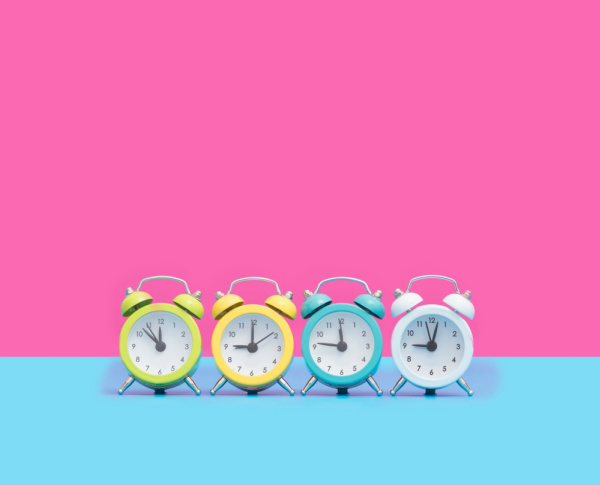Mindset Tool #7 – Get Stuff Done
This month, we’re talking about tools you can use to make healthy changes in your life, especially changes you find hard to make. Recently, we talked about the importance of focusing on action, not inspiration and why expecting to fail makes sense.
Today, let’s talk about why it’s so important to get stuff done – to focus on action, not motion -when you’re making positive changes in your life. (Includes affiliate links)

Focusing on action, not motion, is an idea that I read about in James Clear’s excellent book Atomic Habits. And although action and motion sound similar, Clear shows that they’re actually quite different – and that understanding the difference can determine whether you move forward on your healthy changes or just spin your wheels.
In the book, he says that motion consists of planning, learning, and figuring things out. And while those steps are important, and in some cases critical, they aren’t sufficient.
Because “motion steps” never lead to an outcome. Which means that if you continue in motion, you’ll end up organized, informed, and clear on your plans – and basically going around and around and not accomplishing the things you want to accomplish.
Or, as he describes it, “Motion makes you feel like you’re getting things done. But really, you’re just preparing to get something done.” (Atomic Habits, p. 142)
Action, on the other hand, leads to an outcome. When you take “action steps,” you actually make progress and move forward on making a positive change or reaching a goal. Motion may inform action, but if you don’t take action you’ll never move forward.
Okay, so what does that mean for you, a busy woman who’s working on making healthy changes in her life?
First, it means that you need to identify the “motion steps” vs. “action steps” that are specific to your life and the changes you want to make.
Second, it means that you need to minimize motion and prioritize action, so that you can actually move forward and make progress – in other words, get stuff done.
So let’s look at some examples of motion vs. action. In terms of making healthy or positive changes motion might look like:
- Researching the healthiest diets, best weight loss plans, or easiest meal prep tips.
- Searching online for the best, easiest, or most fun exercise videos.
- Putting together several exercise playlists.
- Endlessly researching the options for the online shop you want to open or the blog you want to start.
- Brainstorming and outlining the book you want to write.
- Reading books on how to improve your marriage.
On the other hand, action might look like:
- Starting to eat more fruits and vegetables and cutting down on sugar and processed food.
- Exercising with whatever video you have on hand or can find quickly.
- Going for a walk and listening to music you already have.
- Moving ahead with opening your online store or starting your blog.
- Sitting down and starting to write your book.
- Talking with your spouse about your marriage and taking small steps to improve it.
And, of course, those are only examples. Both motion and action can take a thousand different forms. And neither of them is all “good” or all “bad” – motion without action can be fruitless, but action without motion can be foolhardy. But… when we’re trying to make healthy, positive changes in our lives, most of us tend to maximize motion and minimize action.
Why? Because “… motion allows us to feel like we’re making progress without running the risk of failure.” (Atomic Habits, p. 142)
Oh, there we go. Let’s say that again – “… motion allows us to feel like we’re making progress without running the risk of failure.”

Now we see why motion looks so attractive – because you cannot fail at motion! You cannot fail at planning, learning, and figuring things out. As a matter of fact, you can excel at them – with organized lists, pages of research notes, stunning spreadsheets, and phenomenal outlines to show for your effort. (So perhaps motion is a form of resistance?)
But you can fail at action. You may not stick to your healthy diet. You might not lose weight. You may exercise for 3 days and then quit. Your online store may not make any money. Your mother may be the only person who reads your blog. Your book may stink. The steps you take to strengthen your marriage may not work.
And those things hurt. So if you can avoid the hurt by continuing to plan, learn, and organize, why not do it?
Here’s why – because those things won’t get you where you want to go. They’ll help you get started on your journey – and you may need to revisit them along the way – but they will not help you move from where you are now to the healthier, happier place where you want to be. They just don’t have the power to do it.
But action does have that power. In fact, it’s the only thing that does.
So if you’re going to reach your goal or make the healthy or positive change you really want to make, you have to take action. Regularly and consistently, moving forward one step at a time.

Use the Tool – Today or tomorrow, take some time to think about motion vs. action in terms of the changes you’re trying to make In particular, identify things you’re doing that keep you in motion, but don’t move you forward. How and where are you spending too much time planning, thinking, reading, researching, or organizing? Make some notes if that helps you clarify things. Then identify two ways that you’ll put aside motion in the coming week and take action instead. Make a specific plan for how, when, and where you’ll take action – and how you’ll deal with anything that attempts to get in your way. In other words, decide how you’re going to actually get stuff done!
I’d love to know how motion vs. action plays out in your life when you’re trying to make healthy changes. Leave a note in the Comments, or email me at hello @ healthylifetoolbox.com.
You can find all of the tools in the Healthy Life Toolbox here.







